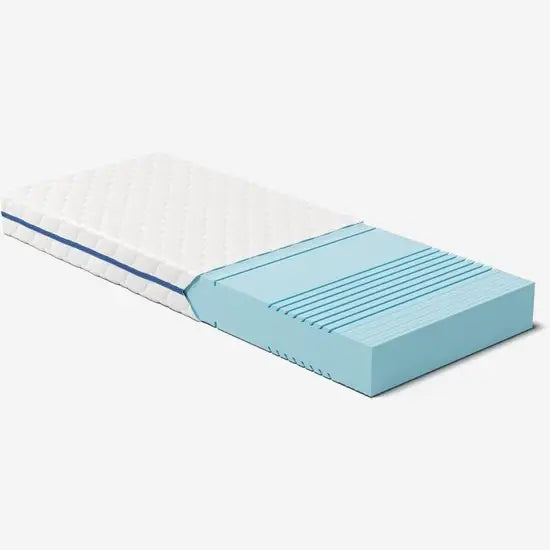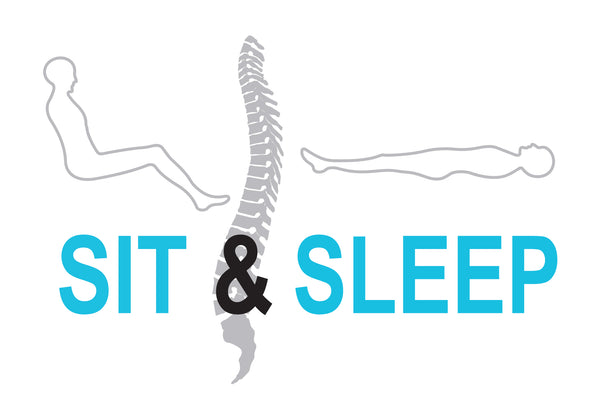
What is a cold foam mattress?
What is a cold foam mattress?
A cold foam mattress is made of polyurethane foam, also known as High Resilience (HR) foam. This type of foam is known for its resilience and durability and is lightweight.
The HR value of cold foam indicates the density and quality of the foam and is expressed in values such as HR30, HR40, HR50, and so on. Generally, the higher the HR value, the firmer the mattress feels. A too low HR value is more likely to dent than a higher HR value. Cold foam mattresses with a low HR value will last less long than those with a higher HR value. An HR value of 50 or higher forms a sufficiently firm and durable mattress base for the average person.
Cold foam good for back problems
Cold foam mattresses lack comfort zones and therefore offer insufficient support. Support zones can be created by combining different firmness levels or by adding additional materials, making the mattress more elastic and improving its quality.
Despite this, the support is often inadequate and not suitable for people with back problems.
Different properties of cold foam
- It's a synthetic material. Fully cold foam: not recommended due to limitations in ventilation, hygiene, and comfort.
- Cold foam has progressive counter-pressure. This means that the more the foam is compressed by your body, the more the foam provides counter-pressure.
- If this counterpressure is too high on the skin and muscle tissue, blood flow can be restricted. You may experience tingling/numbness, especially in your hands, arms, and feet/legs.
How much weight can a cold foam mattress carry?
The amount of weight a cold foam mattress can carry depends on the mattress hardness.
Guidelines for cold foam mattresses is
- Soft: Up to 80 kilos
- Medium: up to 100 kilos
- Firm: up to 130 kilos
Does a cold foam mattress ventilate well?
- Cold foam has an open-cell structure, but despite this, it's also a synthetic material. It's not recommended due to limitations in ventilation, hygiene, and comfort.
- Cold foam ventilates better than memory foam.
- A cold foam mattress feels warmer than a latex or pocket spring mattress due to the synthetic material.
What is the difference between cold foam and memory foam?
Cold foam takes its name from its production method: the foam is poured into cold molds. This is called "Cold Cure Molding." Cold foam is made of polyurethane. It's a sturdy material that won't sink into.
Memory foam: unlike cold foam, it's made of viscoelastic polyurethane. It reacts to body heat, softening the pressure points. This ensures even distribution of body weight, relieving pressure and relieving joint strain. It's therefore often recommended for people with muscle and joint pain. The downside is that it's less ventilated and can sometimes feel a bit "sunken."
Pros and cons
Advantages:
- Cheap
- Sturdy material
- Light in weight
- Durable
Disadvantages:
- Not ventilated
- Not zoned
- High back pressure on the body
- Insufficient support
Our vision of a cold foam mattress
Cold foam mattresses are not part of our ergonomic mattress range.
The mattresses are often too hard and not or barely zoned, which means that the spinal column is not sufficiently supported. The counter pressure of the cold foam also puts too much pressure on the skin and muscle tissue, which can restrict blood circulation.
In addition, it is a synthetic material that retains heat and moisture instead of dissipating it.
We recommend using as many natural materials as possible, such as wool, cotton, natural latex, and wild silk, for an optimal sleeping environment and healthy sleep hygiene.


